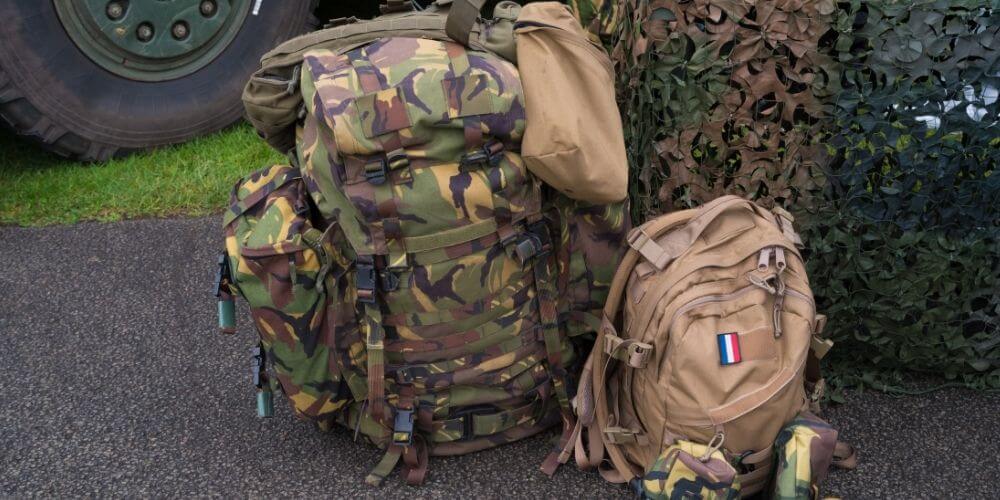Rucking is a popular cross-training exercise that is used by military personnel, law enforcement officers, and athletes. Rucking is basically walking with a weighted backpack.
It is a great exercise that helps build endurance, strength, and balance. The backpack carries weight depending on the desired distance but most commonly weighs between 10-40 lbs. The goal of rucking is to travel a certain distance carrying the full load.
Shorter people usually struggle with rucking for longer distances as they sometimes cannot keep up and will try to overstride which can lead to injury.
In this article, we are going to share some rucking tips for short guys so they avoid injury and enjoy the full benefits of this workout.
Rucking Tips for Short Guys
People who are shorter need to prepare more than taller people in order to effectively ruck. This includes packing and adjusting their packs properly, as well as adjusting their stride length.
Here are five tips for rucking that short guys can use to their advantage.
- Progression is important
- Stretch before and after
- Larger strides
- Nutrition and hydration are important
- Pack in a way that is advantageous to your height
Let’s take a look at each tip in more depth:
Train Before Rucking
Train in advance. Progression is very important when it comes to rucking effectively and safely. If you are not making progress, be sure to check your form and make adjustments. Be patient; you will see results if you stick with it. Start with smaller rucks and gradually add more challenging weights and longer distances as you improve.
In order to remain stable, make sure to strengthen your core when rucking. For shorter people, having a sturdy core is especially useful because it can assist in reducing stress on the spine and shoulders.
Stretch

Stretching has been shown to be beneficial before and after rucking, as it helps to minimize the risk of injury. It is important to warm up the muscles before stretching, and then do the stretch slowly and gradually.
Each person must stretch especially shorter people because while rucking their bodies flex more. Their hips, backs, legs, shoulder, and torso go through more pressure than others. Try hanging by a pull-up bar to stretch your back.
Larger Strides
On flat surfaces, it can be beneficial to increase your pace slightly. Make slightly more of a long stride than usual. But do not lengthen your stride too far; you’ll ultimately put more stress on your hips, and that instability could lead to an injury. You might disturb your balance more than when running or walking. The large weight will mess with your equilibrium.
Walking downhill naturally lengthens your step length, so focus on maintaining it. However, be sure to have both feet on the ground at all times. Rucking downhill is much more dangerous with body weight. You don’t want to get more momentum because it can make you lose your balance and fall.
One of the most vital rucking tips for short people moving up a hill is to take up shorter steps.
Some things to keep in mind while rucking are:
- Spread the force on your whole foot
- Keep your knees slightly bend
- Do not run
- Control your breathing
Rucking is an intense physical activity that can be performed in a variety of environments. Proper boots and insoles are important for ensuring that the person rucking is able to complete the activity safely and effectively.
Insoles can help distribute the weight more evenly across the foot, which can improve stability and reduce fatigue. Boots should also be designed with good arch support and ankle protection to ensure that the rucker is able to move without feeling like something is holding him back during the exercise.
Nutrition and Hydration are Important

On the morning of the ruck, be sure to eat foods with carbohydrates, protein, and low fat. Try bananas, oatmeal, and peanut butter. Keep convenient snacks during ruck breaks. Those with a fast metabolism ceaselessly burn calories and always need a snack.
Endurance and properly expending energy are central to the sport of rucking. If you push yourself too hard without properly fueling your body, your muscles will not work properly.
When rucking, it is important to drink plenty of fluids to stay hydrated. Dehydration can lead to muscle cramps, fatigue, and reduced performance. Drinking water or sports drinks before, during, and after a ruck will help you stay hydrated and perform at your best.
Packing

One of the key tips for short people is making sure you pack correctly. Your short stature can make your body stressed if you don’t pack it in the correct way. Remember, you have to play to your strengths.
We want to place things that we will not need to access on the fly, and preferably lighter, fluffier stuff at the bottom of the backpack. This provides you with comfortable cushioning for the heavy items in your backpack.
The closer an object is to your back, the less strain it will place on your body. If an object is heavy and not close to your back, it will cause you difficulty while rucking.
Those straps hanging down from your pack that may seem kind of random can allow you to compress your pack by tightening them. Compressing your gear will keep it from shifting and moving around.
Final Thoughts
In conclusion, rucking is a great way for short guys to get in shape and build muscle. By following these tips, you can make the most of your rucking experience and see results. So what are you waiting for? Get out there and start rucking!
